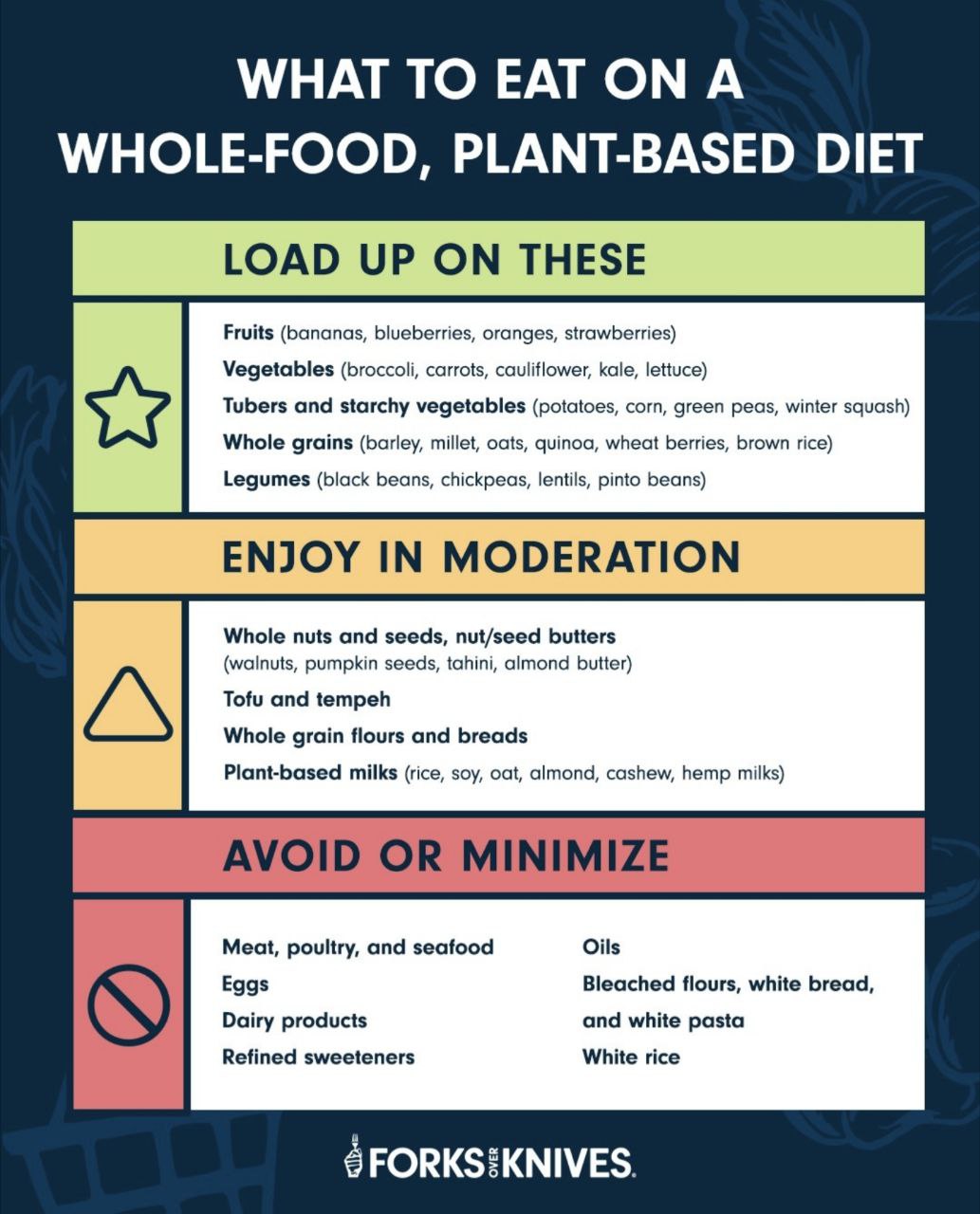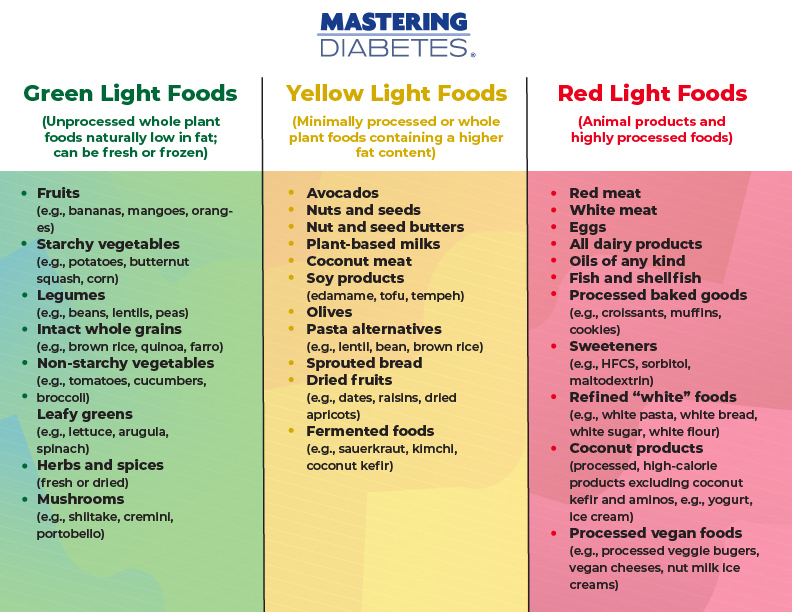Which foods are to be consumed in moderation in Forks Over Knives guidelines? Let's see:

Source: Forks Over Knives Diet
1) Whole nuts & seeds; nut/seed butters: We eat these in moderation so that we have a Low Fat system. Why Low Fat? See The Emphasis on Low Fat.
2) Tofu & tempeh: Soy food are health promoting! See Soy, Tofu, Tempeh. However, tofu and tempeh are not whole foods; they are derived from soybeans and are richer in fats than soybeans. In order to make our overall food system Low Fat, we should consume tofu and tempeh in moderation.
3) Whole grain flours and breads: When we pulverize intact whole grains into flours, we increase their glycemic index, increase their propensity to make us overeat, and we reduce fiber — food for our gut bacteria. Taking all of these factors into account, flours are discouraged; it's best to consume whole grains in their intact form; broken / cracked and rolled whole grains are also okay. For details, see Whole Grains Hierarchy and Whole Grain Flours.
4) Plant-based milks: Almost all plant-based milks are made this way: First, we soak nuts or seeds (or grains or beans), then add water and then blenderize the mixture in a high speed blender. Next, we use a strainer to separate the liquid portion (the 'plant-based milk') from the chewy part of the blended mixture. See Mylk & Yogurt Recipes. Thus most plant-based milks are not whole foods; plant-based milks derived from nuts and seeds are high in fats. On the whole, we should minimize their intake to make sure that our overall food system is Low Fat.
Out of the four foods listed above, which ones can we safely eliminate?
- We can definitely eliminate whole grains flours and breads by shifting to intact whole grains, broken or cracked whole grains, and rolled whole grains.
- Tofu and tempeh are not essential; we can consume edamame and soybeans-based preparations. However, tofu and tempeh are very convenient to consume in the modern world, so from a practical standpoint, it's a good idea to retain them in our food system but consume them in small quantities daily.
- Nuts and seeds are essential — seeds are health promoting; we should keep consuming them. However, if we're following a Low Fat system, we need to be mindful of our total nut and seed intake.
- Finally, plant-based milks are totally optional. We can consume the actual nuts, seeds, grains or beans from which plant-based milk was derived. From a practical standpoint, one specific plant-based milk stands out: the 2-ingredient organic soy milk sold by multiple brands. Soy foods are health promoting; soy milk provides a convenient way to consume a serving of soy foods in the morning — we can add soy milk to our morning breakfast.
"Our body has a remarkable ability to recover from sporadic insults, as long as we're not habitually poking it with a fork." — Dr Greger in this FaceBook post.
Below is a video explaining Dr Greger's traffic light system for ranking the relative healthfulness of Green Light vs. Yellow Light vs. Red Light foods.
(2021) Dining by Traffic Light: Green Is for Go, Red Is for Stop.
(7 mins) Transcript. Dr Greger's summary: "In this video, I explain my traffic light system for ranking the relative healthfulness of Green Light vs. Yellow Light vs. Red Light foods." Excerpts from this video:
Green vs Yellow vs Red:
What are processed foods?
Should we eat yellow light or red light foods?
Cookbook: The How Not to Die Cookbook (272 pages, 2017) by Dr Greger is 100% Green Light foods.
A key guideline in Mastering Diabetes program is to lower our total fat intake to approximately 10% to 12% of total calories. Keeping that in mind, foods like avocados, nuts & seeds, nut & seed butters, coconut milk and soy products are in the yellow column. Additionally, in order to avoid sugar spikes, it's best to consume carbohydrate rich foods in their whole, unprocessed forms. Thus dried fruits and even flour and bread are in the yellow light column. Why are fermented foods in the yellow light column? Probably the sodium content.
Dr Esselstyn recommends zero nuts, and only 1-2 tbsp flaxseed and chia seeds daily. Why? See How Many Nuts & Seeds To Eat Daily? for a discussion.
Yes! In my personal experience, Dr Esselstyn's recommendation of eliminating nuts is a good idea. Nuts are indeed addictive. Eliminating flours and breads is also a good idea. I have found both to be addictive. For example, I would buy Ezekiel 4:9 Low Sodium bread and easily eat 6-7 slices of that bread in a meal. And my taste buds would then seek bread daily.
Eliminating yellow light foods will make Whole Food Plant-Based guidelines 'spartan' — very plain. Practically speaking, my suggestion would be to include them when we've just begun to adopt WFPB guidelines. Over time, we'll naturally feel like dropping them as we become more aware of our body's response to foods we eat.

 Instagram
Instagram YouTube
YouTube